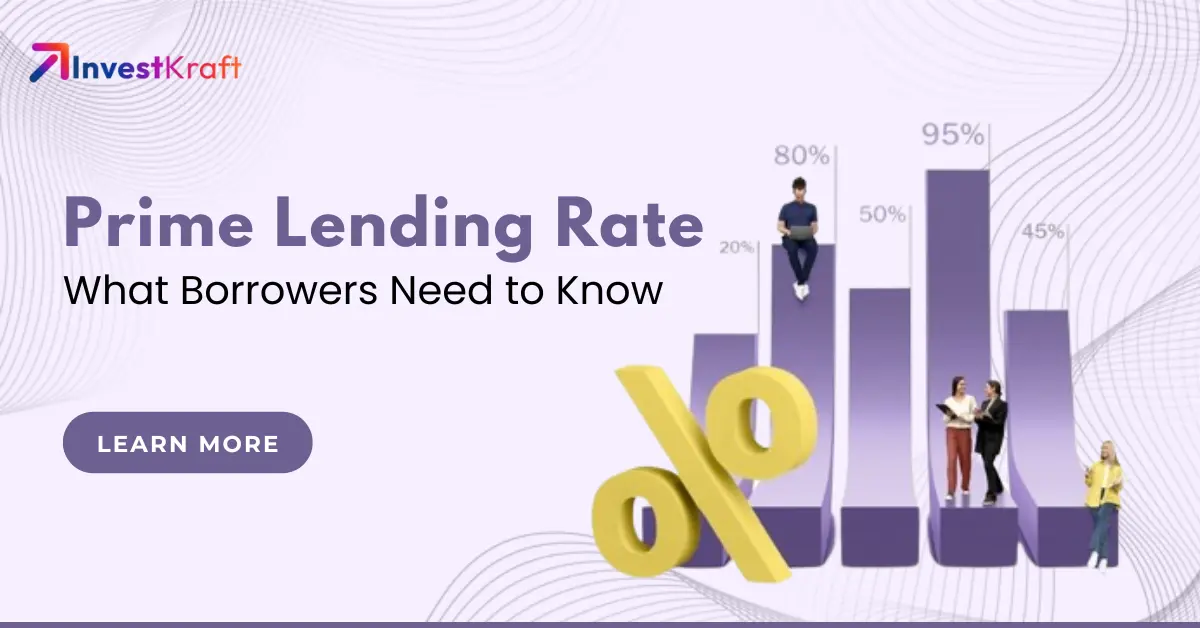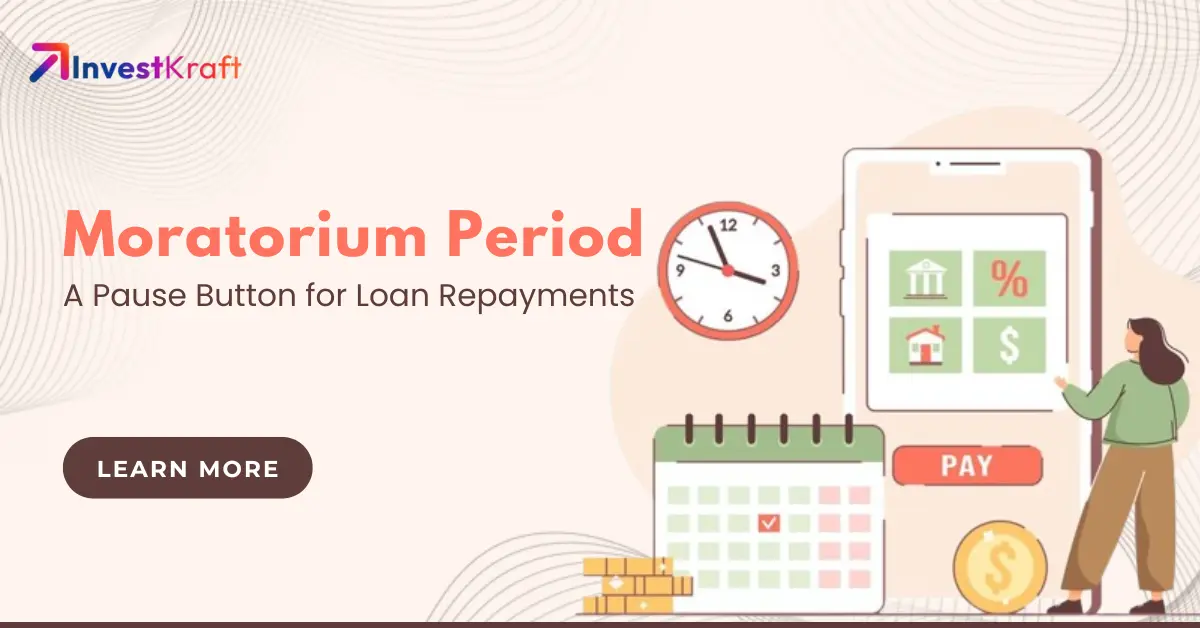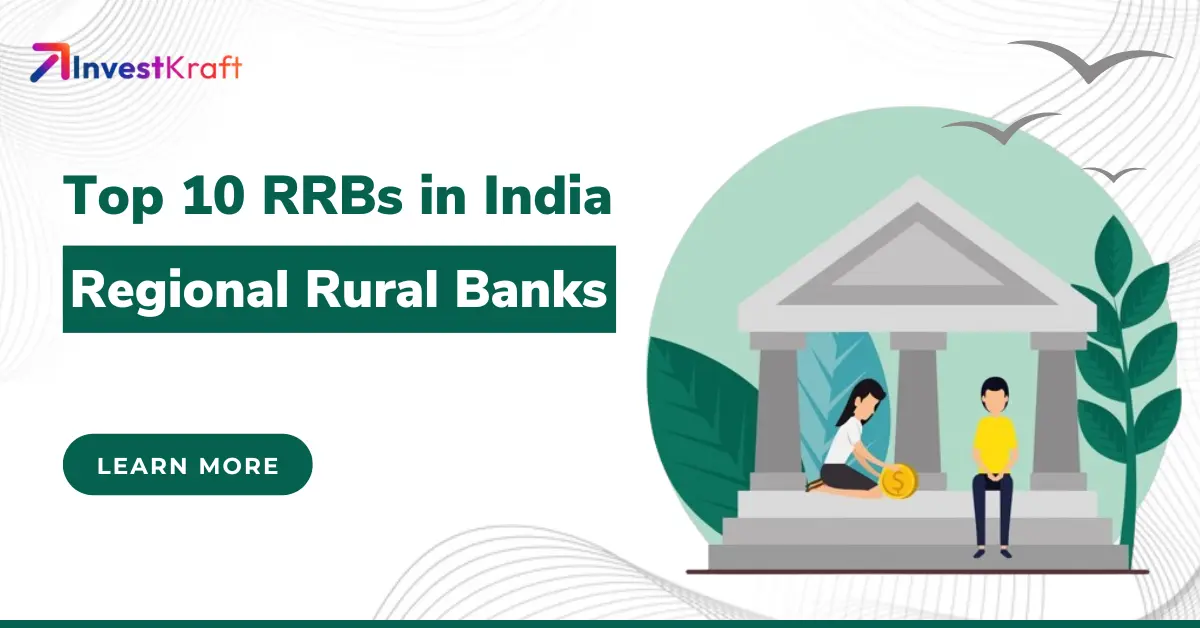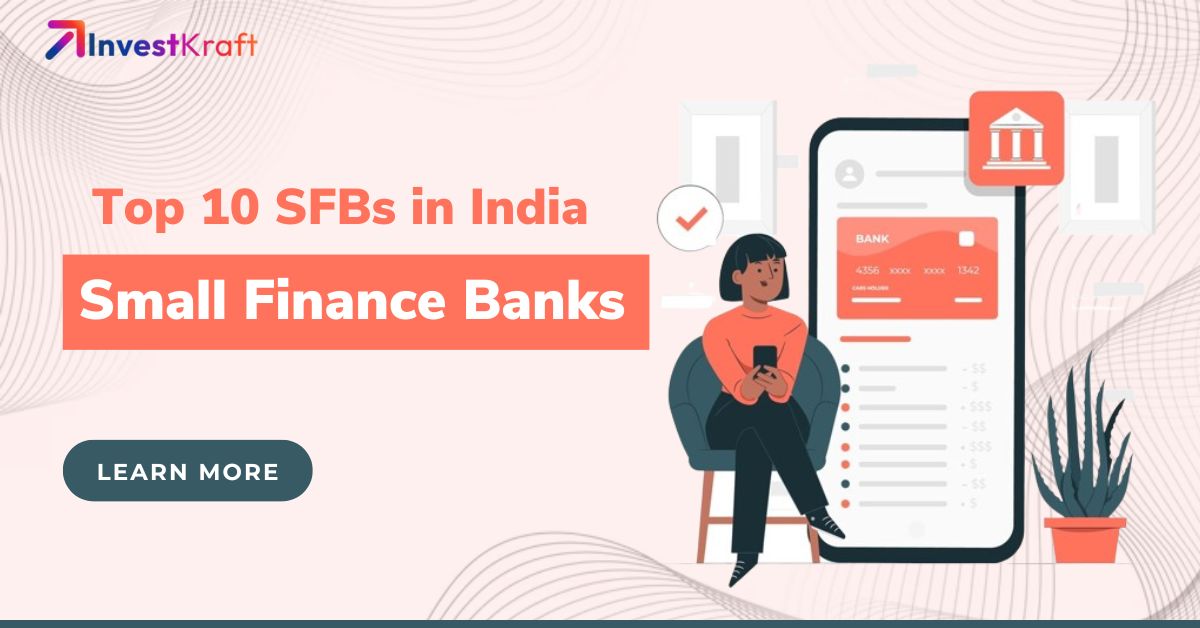Prime Lending Rate: A Friend or Foe for Borrowers?

When purchasing items on credit, it is common to need a financial investment and many turn to loans when savings fall short. Evaluating various factors is crucial when considering a loan, with the interest rate being a key consideration. Understanding how interest rates affect monthly EMIs and the overall payment is essential for accurately determining the purchase cost when buying on credit.
To understand the impact of PLR rate on your loans, it is important to be familiar with its full form, i.e. Prime Lending Rates. By delving deeper into the concept, you can gain insights into how this rate influences the interest rates on your loans.
How Do You Define the Financial Term Prime Lending Rate?
The Prime Lending Rate (PLR) plays a crucial role in influencing interest rates for various financial products such as variable-rate home loans, personal loans and business loans, making it a key factor for borrowers and financial institutions. It reflects the creditworthiness of the most reliable customers and serves as a reference point for setting interest rates. This rate is closely monitored and significantly impacts the overall economy and financial markets.
The Prime Lending Rate is usually affected by the bank’s monetary policy and serves as the lowest rate for lending money. It influences other interest rates in the economy and can change when the Reserve Bank of India adjusts its key policy rates, such as the repo rate.
Prime Lending Rate primarily benefits borrowers with excellent credit history, sound financial stability and low default risk. On the other hand, borrowers with lower credit scores or higher risks might be subject to higher interest rates, often above the Prime Rate.
Importance of PLR and its Impact on Loan Costs
Let us now discuss the importance of Prime Lending Rate (PLR) and its impact on loan costs -
- Loan rates are influenced by various factors such as the Bank’s Prime Lending Rate or PLR. The PLR acts as a baseline interest rate for the bank’s most creditworthy customers, which in this case is 8%. For customers who do not qualify for the PLR, the Bank applies a margin on top of the PLR to determine their interest rates. For instance, a home loan could have an interest rate of PLR +2%, leading to a 10% interest rate for the borrower
- The PLR plays a crucial role in the borrowing costs and financial decisions of both individuals and businesses. When the PLR is low, individuals can benefit from more favourable loan terms, which can encourage borrowing and spending. On the other hand, when the PLR is high, borrowing becomes more expensive, potentially discouraging borrowing and spending. Similarly, for businesses, particularly SMEs, fluctuations in the PLR can greatly affect the cost of capital, which in turn influences investment decisions and plans for expansion
- Changes in the PLR are often a reflection of RBI’s overall monetary policy stance. In times of economic downturn, the RBI may decrease the repo rate to encourage borrowing and spending, leading to a decrease in the PLR. On the other hand, in times of inflation, the RBI may increase rates to manage the economy, causing the PLR to rise
- Investors and analysts closely monitor changes in the PLR as it offers valuable insights into monetary policy and economic conditions. These fluctuations can significantly affect stock markets, bond yields and overall investor sentiment
- The PLR is a key factor in determining the accessibility of credit and policies that lower the PLR can make credit more affordable for a wider range of people. This can aid the government in its goal to include more individuals and businesses in the formal financial system. Therefore, the PLR plays a crucial role in shaping financial inclusion by impacting the availability of credit to different segments of the population
How Does a Low Prime Lending Rate Benefit Borrowers?
A low prime lending rate can be a game-changer for borrowers, especially those who have a solid credit history. It means -
- Lower Interest Rates on Loans: Banks use the prime rate as a reference for various loan types such as mortgages, personal loans and business loans. When the prime rate decreases, banks usually lower their interest rates accordingly, resulting in considerable savings for borrowers. This reduction in interest rate can lead to a smaller, monthly payment for mortgages, allowing borrowers to have more money available for other expenditures
- Increased Borrowing Power: Lower interest rates make borrowing more affordable, enabling individuals to take out larger loans for major expenses like homes or cars. Furthermore, reduced rates can motivate businesses to borrow money for expansion, which could result in job creation and economic prosperity
- Stimulates Spending and Investment: Easier and cheaper credit access stimulates spending and investment, which in turn enhances economic activity. Increased consumer spending creates higher demand for goods and services, encouraging businesses to expand
- Debt Consolidation Opportunities: A low prime rate creates a favourable situation for individuals to merge their high-interest debts into one loan with a lower interest rate, making it easier to manage and decreasing the total interest paid
How Can Indian Borrowers Stay Informed About Prime Lending Rate Fluctuations?
In India, the primate rate, commonly referred to as the Base Lending Rate (BLR), is a significant rate established by commercial banks. It acts as the foundation for determining loan interest rates. Individuals who have floating-rate loans, such as home loans, are directly affected by variations in the prime rate.
To remain current on India's prime rate changes, consider the following measures.
1. Monitor RBI Policy Announcements
- The Reserve Bank of India is the central bank in charge of monetary policy, which includes the setting of the repo rate. This rate has a direct influence on the prime rate
- You can stay updated on the latest monetary policy decisions by following the RBI website. They release policy announcements and press releases regularly, which often involve changes in the repo rate
2. Stay Updated with Banks
- Your bank needs to keep you updated on any changes to the prime rate and how they impact your loan’s EMI or tenure. Typically, this information is communicated through emails, SMSs or notifications on the bank’s mobile app. It is crucial to stay informed about these updates to understand the potential impact on your financial obligations
- Banks frequently publish their prime rates on their websites. It can be very beneficial to check your bank’s website regularly for these updates
3. Follow Financial News Sources
- Financial news websites and publications consistently report on the policy decisions of the RBI and how they influence prime rates
- To stay updated on interest rate changes, subscribing to the newsletter or following relevant sources on social media is recommended
4. Utilize Mobile Banking Apps
- Several banks have mobile banking apps that allow users to conveniently access and view important information related to their loans, including details about interest rates
- Enabling notifications on your bank’s app is a great way to stay informed about any changes in the prime rate and how they may impact your loan. This can help you make timely decisions and stay on top of your financial obligations. Plus, it allows you to take proactive steps to manage your finances effectively
Strategies for Borrowers in a High Prime Lending Rate Environment
Rising prime lending rates can have a significant impact on borrowers, increasing the cost of borrowing and potentially putting a strain on budgets. In such an environment, it is important to consider certain strategies. These strategies can help borrowers navigate the situation effectively and mitigate the financial burden.
1. Shop Around and Compare Rates
- It is important not to accept the initial offer. Even slight variations in interest rates can result in substantial savings throughout the loan
- Consider comparing rates from multiple lenders, such as traditional banks, credit unions and online lenders. This will help you find the best terms and interest rates for your financial needs. It is important to explore different options to ensure you are getting the most favourable deal available
- When selecting a loan, it is important to consider more than just the interest rate. Take into account additional factors like fees, loan terms and whether there are any prepayment penalties. These aspects can greatly impact the overall cost and flexibility of the loan
2. Improve Your Creditworthiness
Improving your credit score is crucial for qualifying for lower interest rates. To achieve this, ensure that you pay your bills on time, maintain low credit card balances and strive to have a healthy mix comprising both instalment loans and credit cards.
3. Borrow Only What You Need
It is important to carefully consider borrowing in a high-rate environment. Make sure to only take out loans for what is truly necessary and what you can easily manage to pay back.
4. Explore Alternatives to Borrowing
- Exploring options other than borrowing, like using savings, postponing expenses or seeking additional sources of income, can help manage financial needs effectively. By considering these alternatives, it is possible to minimize the need for taking on debt
- Leases provide the flexibility to finance equipment or vehicles and avoid taking out an expensive long-term loan. By spreading the cost, you can manage your expenses more effectively. This option allows you to use the equipment or vehicles without committing to burdensome loans
5. Renegotiate Existing Loans
Consider discussing with your lender to switch your existing lender to switch your existing loans from variable interest rates to fixed rates. Doing so can give you stability and predictability in your monthly payments.
6. Be Wary of Predatory Lending
Beware of predatory lenders during economic downturns as they may tempt you with appealing loan options that come with exorbitant interest rates and unfavourable conditions. It is important to remain cautious and avoid falling victim to loan offers that seem too good to be true.
7. Consider the Long-Term
It is important to consider the possibility of interest rates decreasing in the future when making long-term investment decisions, such as buying a house. Although rates are currently high, they are not guaranteed to stay that way. Taking potential future rate fluctuations into account can help in making informed financial choices.
Conclusion
Are you considering taking out a loan? Don't forget to factor in the Prime Lending Rate (PLR). It plays a crucial role in determining interest rates for various financial products such as variable-rate home loans, personal loans, and business loans. Borrowers with excellent credit history, sound financial stability, and low default risk can benefit from a low PLR, leading to lower interest rates, increased borrowing power, and debt consolidation opportunities. A low PLR stimulates spending and investment, leading to economic prosperity.
By keeping an eye on the fluctuations in the PLR and its impact on the overall economy and financial markets, you can make informed financial decisions that can help you achieve your goals while minimizing the costs associated with borrowing. Don't let a high PLR be a foe to your financial goals, make it your friend by understanding its impact on your loans.
Frequently Asked Questions (FAQs)
Q: What is the prime lending rate, and who sets it?
A: The prime lending rate is the interest rate charged to highly reliable customers by commercial banks, usually established corporations known for their loan repayment history. It acts as a reference for interest rates on different loan types like mortgages, auto loans and business loans provided by banks
While individual banks have the authority to set their Prime Lending Rate, it is commonly established as a predetermined markup above the central bank’s policy rate. Central banks such as the Reserve Bank of India or the Federal Reserve in the US utilize the policy rates to impact economic activity
Q: How does the prime lending rate affect borrowers?
A: The PLR has a major effect on borrowing costs since banks adjust rates accordingly. When the prime rate increases, borrowing becomes expensive as banks raise their loan rates. On the other hand, a decrease in the prime rate results in lower interest rates, making borrowing more affordable for individuals and businesses
Q: What is the difference between the prime lending rate and the base rate?
A: The shift from the prime lending rate to the base rate system in India has allowed for a more customized approach to determining interest rates for customers. Unlike the PLR, the base rate takes into account the bank’s specific cost of funds and operating expenses, providing a more accurate reflection of the lending environment. This change has given banks greater flexibility in adjusting interest rates under their unique circumstances
Q: How does the prime lending rate affect the stock market?
A: The prime lending rate has an indirect impact on the stock market. When the prime rate is lower, businesses can borrow money at a cheaper rate, encouraging economic activity. This can result in increased investments, leading to higher corporate profits and stock prices. On the other hand, when the prime rate is higher, economic activity may slow down, affecting corporate earnings and ultimately influencing the stock market negatively
Q: Is the prime lending rate the same for all banks?
A: No, the prime lending rate differs among banks. Although it serves as a benchmark, each bank has some flexibility in determining its own PLR. This decision may be influenced by various factors such as:
- Bank's cost of funds
- Bank's risk profile
- Competition in the market
Q: Are there any early signs that might indicate a potential change in the prime lending rate?
A: Staying informed about economic indicators can help you anticipate potential changes in the prime rate:
- Inflation data
- Economic growth
- Central bank announcements

Author: Abhik Das
Abhik Das is a versatile content writer with over 5 years of experience crafting engaging and informative content across diverse industries. His expertise spans the fields of ed-tech, pharmaceuticals, organic food, travel, sports, and finance.
Here's what sets Abhik apart:
Content Versatility: Able to adapt writing style and tone to suit various audiences and content needs.
SEO Proficiency: Creates content optimized for search engines, ensuring discoverability and organic traffic.
Deep Research: Conducts thorough research to ensure content accuracy and credibility across complex topics.
Engaging Storytelling: Captures reader interest with clear, concise, and compelling writing.
Abhik's diverse background empowers him to deliver insightful content across a wide range of subjects. Whether you're seeking engaging explainer pieces on the latest financial trends, informative guides to organic food choices, or captivating travelogues, Abhik has the expertise to craft content that resonates with your audience.







.webp)












